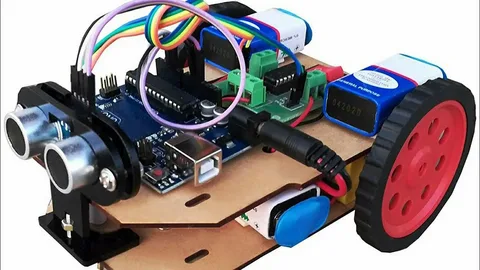In the fast-evolving world of robotics and automation, safety and precision are paramount. One of the key technologies enabling robots and autonomous systems to navigate complex environments efficiently is 3D obstacle avoidance. This advanced technique allows machines to detect, analyze, and maneuver around objects in their path with remarkable accuracy.
Whether it’s industrial robots working alongside humans, drones navigating urban landscapes, or automated vehicles on the move, 3D obstacle avoidance systems have become essential. They improve operational safety, boost efficiency, and reduce costly collisions or downtime.
This article explores what 3D obstacle avoidance is, how it works, its practical applications, and why it’s a game-changer in robotics today.
What Is 3D Obstacle Avoidance?
3D obstacle avoidance refers to the ability of robotic systems to sense obstacles in a three-dimensional space and react in real-time to avoid collisions. Unlike simpler 2D systems that detect objects only in a flat plane, 3D systems provide comprehensive spatial awareness by capturing depth, shape, and position data of objects around the robot.
This capability is achieved using advanced sensor technologies such as stereo vision cameras, LiDAR (Light Detection and Ranging), time-of-flight (ToF) cameras, or structured light sensors. These sensors create detailed 3D maps of the environment, enabling the robot’s control system to plan safe navigation paths dynamically.
How Does 3D Obstacle Avoidance Work?
The process involves several key steps:
- Data Acquisition: Sensors scan the surroundings to collect spatial information.
- Data Processing: The raw sensor data is converted into a 3D model of the environment.
- Obstacle Detection: The system identifies obstacles by comparing the 3D model with known free space.
- Path Planning: Algorithms compute alternative routes or movements to bypass detected obstacles safely.
- Motion Execution: The robot adjusts its motion commands to avoid collisions while maintaining its task objectives.
For a more detailed explanation of cutting-edge 3D obstacle avoidance technology, you can read more.
Practical Applications of 3D Obstacle Avoidance
Industrial Robotics
In manufacturing, robots equipped with 3D obstacle avoidance systems can work safely around human workers. They can detect unexpected obstacles or personnel entering their workspace and halt or adjust their movements instantly to prevent accidents.
Autonomous Vehicles
Self-driving cars rely heavily on 3D obstacle avoidance to navigate traffic, pedestrians, and road obstacles. Accurate 3D perception helps the vehicle make safe decisions in real time, ensuring passenger safety and smooth operation.
Drones and UAVs
Unmanned aerial vehicles (UAVs) operating in complex environments like cities or forests use 3D obstacle avoidance to prevent collisions with trees, buildings, or other drones. This technology is critical for successful delivery services, inspection, and surveillance.
Service Robots
Robots designed for delivery, cleaning, or customer interaction in public spaces utilize 3D obstacle avoidance to move through crowds and around furniture, maintaining efficiency without causing disruptions.
Benefits of Implementing 3D Obstacle Avoidance
- Enhanced Safety: Reduces the risk of accidents by allowing real-time detection and avoidance of obstacles.
- Greater Efficiency: Minimizes downtime caused by collisions or blockages.
- Increased Autonomy: Enables robots to operate independently in dynamic, unpredictable environments.
- Improved Flexibility: Allows machines to adapt to changes in their surroundings without manual intervention.
Challenges and Considerations
While 3D obstacle avoidance offers impressive advantages, it also poses challenges such as:
- Complex Data Processing: High computational power is needed to process large amounts of 3D data quickly.
- Sensor Limitations: Environmental factors like lighting, weather, or dust can affect sensor performance.
- Cost: Advanced sensors and processing units may increase the overall system cost.
However, continuous advancements in sensor technology and AI-driven algorithms are steadily overcoming these hurdles.
Future Outlook
The future of robotics and automation is tightly linked with the evolution of 3D obstacle avoidance systems. As sensors become more affordable and algorithms more sophisticated, expect wider adoption across industries, leading to safer workplaces, smarter vehicles, and more autonomous machines in everyday life.
In summary, 3D obstacle avoidance is a transformative technology empowering robots and autonomous systems to perceive and interact with their environments intelligently. Its impact spans industrial automation, transportation, aerial systems, and service robotics, driving innovation and safety forward.
If you want to dive deeper into the technical aspects and latest developments in this field, be sure to read more.


